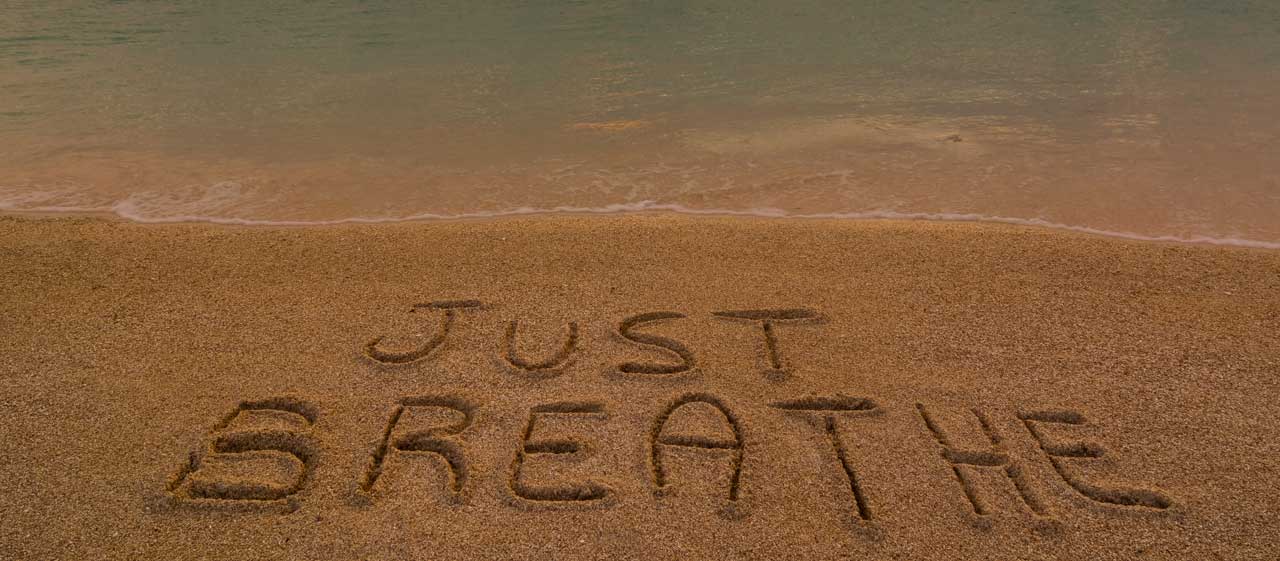With so much in today’s world to stress us out and so many ways to relieve anxiety, it can be difficult to remember or even believe that there is great stress-reducing power in a simple breath. Breathing may be the most basic of human activities, but it can also affect our mental and physical well-being in complicated and exquisite ways.
Are You Telling Me There’s a Right Way to Breathe?
Well, there are actually many techniques for breathing in specific ways that decrease stress and anxiety. Most of them involve focusing your attention on your breath for a period of time, thus centering your scattered thoughts on a single point. That alone can lead to a quick reduction in the mental manifestations of stress. There’ve also been studies that clearly show the physical benefits of focusing on your breathing, including lowering blood pressure (Rajeev Mohan Kaushik, 2006).
We’ll go over just a few simple breathing techniques that you can try. Finding the right one for you can do wonders for your stress-reduction. These are all great, easy techniques for those who are beginners with focused breathing, but they are also just as useful and helpful for people who have practiced it for a while.
Equal Breathing
Equal breathing, called sama vritta, is an excellent relaxation technique that is easy to remember and practice. Make yourself comfortable and choose a count number for your breaths. It’s often best to start with three or four, working your way up to seven or eight as you get better at the technique. Below, we have illustrated the basic steps to this technique, using the count of three as a starting point.
- Inhale through your nose to a slow count of three.
- Hold the breath for the same three counts.
- Slowly count to three while you exhale the breath.
- Wait three counts.
- Repeat three times.
Abdominal (or Diaphragmatic) Breathing
This technique is probably best accomplished while standing up or lying on your back. You can do it while sitting in a chair if necessary, and once you become more proficient at it while standing or lying down, you will be able to accomplish it much better in a sitting position.
- Place one hand on your chest and the other on your abdomen, just below your ribcage.
- Breathe in through your nose in such a way that the hand on your abdomen rises but the one on your ribcage stays as still as possible.
- Contract your stomach muscles and let your abdomen fall in as you exhale through pursed lips.
This technique is great for working your diaphragm and practicing complete emptying of the lungs.
Progressive Relaxation
This method works especially well for relaxing muscles. You can adjust the amount of time that you hold your breath and tense your muscles for what you need: you should not feel dizzy.
- While in a seated position, close your eyes and inhale through your nose.
- Hold your breath for five seconds while tensing the first muscle group, your toes and feet.
- Release the breath and relax the muscle group.
- Repeat this technique through all the muscle groups of your body moving up from your feet to your ankles, calves, thighs, hips, abdomen, torso, arms, neck, jaw, face, and eyes.
This is a wonderful exercise to do before bedtime because it leaves your mind and body both feeling relaxed.
Guided Breath Work
If you have a little bit more time, this is a great technique for focusing on breathing. For this, you will need a guided breath recording or a teacher. You will be led through various breathing techniques for stress-reduction. This can be particularly relaxing when it is done along with positive visualization or yoga.
Works Cited
- Rajeev Mohan Kaushik, R. K. (2006, June). Effects of mental relaxation and slow breathing in essential hypertension. Retrieved from Complementary Therapies in Medicine: DOI: 10.1016/j.ctim.2005.11.007.

Progressive relaxation worked great for me. Thanks for the tip, have a wonderful day!